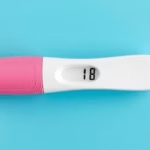Understanding Implantation Bleeding After Taking Plan B
Implantation bleeding is an important topic for individuals who have recently taken Plan B, a form of emergency contraception. In simple terms, implantation bleeding refers to light spotting that can occur when a fertilized egg attaches itself to the uterine lining. This usually happens about a week to ten days after conception. Plan B is designed to prevent pregnancy and is most effective when taken within 72 hours of unprotected intercourse. However, it is essential to understand how Plan B affects the body and the implications of implantation bleeding following its use.
When experiencing menstrual changes or symptoms after taking Plan B, it can be confusing to determine what is normal. In general, the hormones in Plan B can alter the menstrual cycle and lead to unexpected bleeding. Some individuals may confuse this bleeding with their menstrual period, while others may wonder if it indicates a potential pregnancy. Understanding the key differences between implantation bleeding and the effects of Plan B is vital for those concerned about their reproductive health.
What is Plan B?
Plan B is an emergency contraception method that can help prevent pregnancy after unprotected sex. It contains the hormone levonorgestrel, which works primarily by delaying ovulation. If taken shortly after unprotected intercourse, Plan B can stop the egg from being released or prevent fertilization from occurring.
It’s important to note that Plan B is most effective when taken as soon as possible after unprotected sex. A common misconception is that it is an abortion pill, which it is not. If implantation of a fertilized egg has already occurred, Plan B will not terminate the pregnancy. Thus, understanding the timing and effects of Plan B is crucial for individuals who may experience varying symptoms afterward.
Different individuals may react differently to Plan B in terms of side effects. While some may experience nausea or fatigue, others might find fluctuations in their menstrual cycle, leading to confusion regarding their reproductive health.
How Does Implantation Occur?
Implantation occurs when a fertilized egg travels down the fallopian tube and attaches itself to the lining of the uterus. This process is critical for establishing a pregnancy and usually takes place six to ten days after fertilization. Once the embryo implants, it begins to release hormones to signal to the body to prepare for a developing pregnancy.
If someone has taken Plan B, the hormones will often interrupt the natural menstrual cycle. This might lead to either delayed menstruation or unexpected bleeding. Understanding these processes can help to distinguish between normal menstrual changes and early signs of pregnancy.
Especially for those who are sexually active, recognizing the timing of ovulation and implantation is essential for understanding how contraception works, including emergency options like Plan B. If implantation does occur, some individuals may notice light spotting, considered implantation bleeding.
Distinguishing Between Implantation Bleeding and Menstrual Bleeding
One of the primary concerns for someone after taking Plan B is being able to distinguish between implantation bleeding and regular menstrual bleeding. Implantation bleeding typically presents as light spotting, varying from pink to brown in color. Conversely, menstrual bleeding is generally more substantial and may include bright red blood.
Key differences include:
- Timing: Implantation bleeding occurs about a week after conception, while menstrual bleeding typically follows a consistent cycle.
- Flow: Implantation bleeding is usually light and may only last for a few hours to a couple of days.
- Color: The blood from implantation bleeding is often a lighter shade than typical menstrual bleeding.
Being able to identify these differences can help ease concerns and clarify whether additional steps, such as pregnancy testing, is necessary.
Symptoms of Implantation Bleeding
Recognizing symptoms associated with implantation bleeding can be helpful for individuals who are monitoring their reproductive health. Common symptoms include:
- Light spotting or bleeding that differs from a standard period.
- Minor cramping that is less intense than menstrual cramps.
- Changes in breast tenderness or sensitivity.
While many of these symptoms can signify early pregnancy, it is essential to remember that they can also occur due to hormonal fluctuations caused by Plan B. Consequently, attention to the timing and characteristics of the bleeding is necessary to gain insight into what it means for your body.
What to Do If You Experience Bleeding After Plan B
If you notice bleeding after taking Plan B, there are several steps to consider:
- Monitor the bleeding: Track its color, duration, and flow to understand better what it might indicate.
- Take a pregnancy test: If your next menstrual cycle is delayed by more than a week, consider taking a pregnancy test.
- Consult a healthcare provider: If there is concern regarding unwanted pregnancy or if unusual bleeding continues, it is crucial to speak to a doctor.
Seeking guidance from a healthcare professional is beneficial for obtaining a clearer understanding of what your symptoms might mean.
Impact of Plan B on Future Menstrual Cycles
Plan B may cause changes in future menstrual cycles, particularly for those who have recently taken it. Delays in menstruation can result from hormonal changes caused by the pill. For some, periods could come earlier or later than expected.
Normalizing any shifts in the menstrual cycle is essential, although it is common for cycles to return to regular patterns after one or two months. Understanding that these fluctuations are temporary can provide peace of mind for those experiencing changes.
Additionally, keeping track of menstrual cycles can help individuals understand their reproductive health better. Personal observations can inform future healthcare discussions whenever necessary.
FAQs About Implantation Bleeding and Plan B
Addressing frequently asked questions can clarify common customer inquiries about the relationship between Plan B and implantation bleeding. Here are a few:
- Can you get pregnant after taking Plan B?
Though Plan B is effective in preventing pregnancy, it is not 100% guaranteed. If ovulation has already occurred, it may not work. Pregnancy testing is advised if menstruation does not occur.
- What should I do if my period is late after taking Plan B?
A late period can have several causes, including hormonal shifts caused by Plan B. If your period is more than a week late, it’s best to take a pregnancy test and consult a healthcare provider for guidance.
- Is implantation bleeding serious?
Implantation bleeding is generally not considered serious and is rather a natural part of early pregnancy. However, it’s important to discuss any unusual symptoms with a healthcare provider for assurance.
- How long does implantation bleeding last?
Implantation bleeding typically lasts a few hours to a couple of days and is lighter than regular menstrual bleeding.
- Can Plan B cause spotting?
Yes, Plan B can lead to non-menstrual spotting due to hormonal changes in the body. This is a common side effect.
Final Thoughts
Understanding the implications of implantation bleeding after taking Plan B is crucial for anyone exploring emergency contraception. While Plan B can effectively prevent pregnancy, it can also cause fluctuations in menstrual cycles, leading to confusion regarding pregnancy status. The spotting sometimes associated with implantation can be misinterpreted as menstrual bleeding or a side effect of the emergency contraceptive.
Recognizing the differences between implantation bleeding and normal menstrual bleeding can help individuals make informed decisions about their reproductive health. Key factors are the timing, color, and flow of the bleeding, as these can offer critical clues on what is happening biologically.
Moreover, the emotional and physical impacts of hormonal contraceptives necessitate thoughtful consideration. Individuals must remain aware of their cycles and symptoms after taking Plan B. Should any concerns arise, consulting with a healthcare provider remains paramount for clarity and guidance on next steps.
In summary, staying informed and proactive about health will empower individuals to navigate their reproductive choices effectively. Understanding the influence of treatment options like Plan B, as well as recognizing the signs and symptoms of implantation following its use, can lead to more confident health decisions.
Further Reading
What Type of Psychotherapy Is Best for Anxiety?







